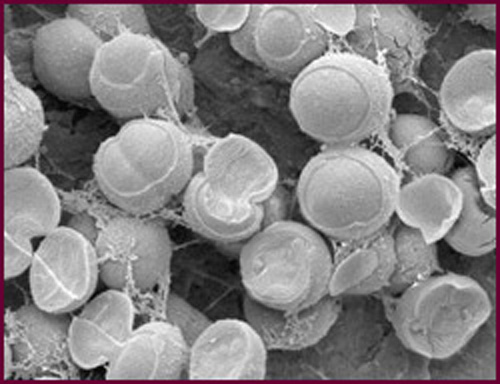At some point or another all aquarists have seen and come into contact with Cyanobacteria. Even though it is sometimes referred to as “Slime Algae” it is in fact a photosynthetic bacteria and some believe it to be the “primordial ooze” from which life first awkwardly flopped its way into existence. Its presence on earth can be traced back in the fossil record 3 billion years ago (for reference, dinosaurs roamed 65 million years ago). Recently, a controversial study started several years ago by one Dr. Paul Cox, a former botany professor at Brigham Young University, has gained momentum as evidence starts to stack in favor of his theory. Is your life in danger?
Dr Cox believes that a compound created by Cyanobacteria called BMAA (a neurotoxin), when ingested over many years, builds up in our systems and can bring on Parkinson’s, Alzheimer’s, and Lou Gherig’s disease.
For years many scientists were divided over the theory but years of accumulating evidence have brought new validity to his study and now over 20 universities, including Dartmouth, have assigned teams of scientists to help study this. The current findings show that cases of these diseases are concentrated in areas with a nearby body of water.
What does this mean for aquarists? I’m not sure, from what I have read the study doesn’t address physical contact with the bacteria other than prolonged exposure through ingestion. While I’m sure some of us have accidentally ingested some of the bacteria while conducting water changes or other tank duties, I don’t think it’s on the same level as drinking water from a contaminated reservoir for years on end. The only bright side to the study is that Dr. Cox believes that only certain people with a hereditary predisposition are at risk. He believes that only in these individuals with the condition, BMAA is allowed to cross the Blood-Brain Barrier where it can then effect the brain triggering disease. Regardless of the actual threat to aquarists, I would err on the side of caution and try to keep from drinking tank water more than usual.
Full story here with a video of Dr. Cox for those who can’t stand typed words.











A wee bit over the top on the title I’d say…
Saying cyanobacteria can kill you is like saying fish can kill you. Sure some fish can kill you, but not man at all. Same goes for cyanobactreria. Not all are evil, like spirulina.
Blue-green algaes are not the same as cyanobacteria. “Blue-green algae” is often used to describe cyanobacteria but the two are not interchangeable. One is an algae while the other is a photosythetic bacteria. Nobody is making cyanobacteria smoothies. Depending on the findings of the study, the threat could be very real if one was susceptible.
Thanks but that is incorrect.
Spirulina is a type of cyanobacteria:
http://en.wikipedia.org/wiki/Spirulina_(dietary_supplement)
There are forms of blue-green cyano can be toxic. Read the second-to-last paragraph:
http://www.ucmp.berkeley.edu/bacteria/cyanolh.html
I stand corrected, but Spirulina hasn’t been shown to contain BMAA anyway, which was the basis of the study.
Heh, it’s all good 🙂
I avoid Spirulina anyway – to me it has a pretty nasty taste.
Right, blue-green algae is sort of a less precise term for cyanobacteria, but they both refer to the same thing. Now while we believe things like Spirulina spp to be safe, unless someone has genotyped all the species of cyano in our tanks, it is possible that some of it produces some nasty stuff that we are not yet aware of. That said, the same was said about microwaves, and cell phones, and all sorts of other things we thought were fine and then weren’t (and then sometimes were fine again 🙂 ). Until someone does the experiments, we can’t say for sure whether the cyano in our tanks produces toxins. All we have is our empirical evidence, which is that everyone gets cyano, and no one has gotten poisoned from it that we know of. Interesting to think about though–
The point of the piece was to make people aware of a possible problem and the focus was on BMAA which is produced by some species of cyanobacteria (that we know of so far). There’s enough information on it now that 20 organizations have created teams to help study it so there is some validity thus far. If you read the last line of the blog it puts it in perspective. The title may or may not be hyperbole but titles are usually designed to entice people to read the article it’s attached to. What you do with the information is up to you, but when your brain melts, just know that I’m not above “I told you so!”